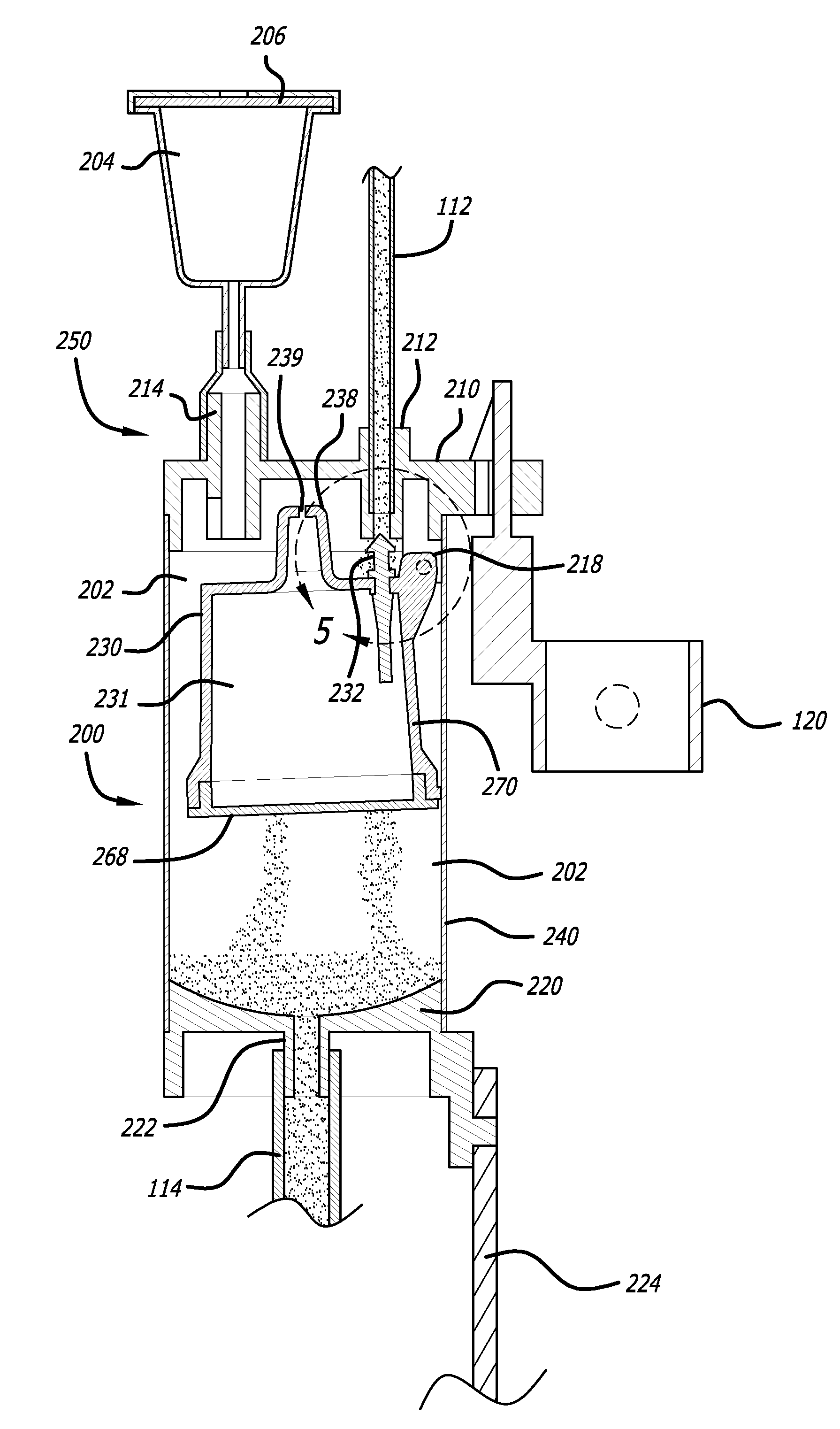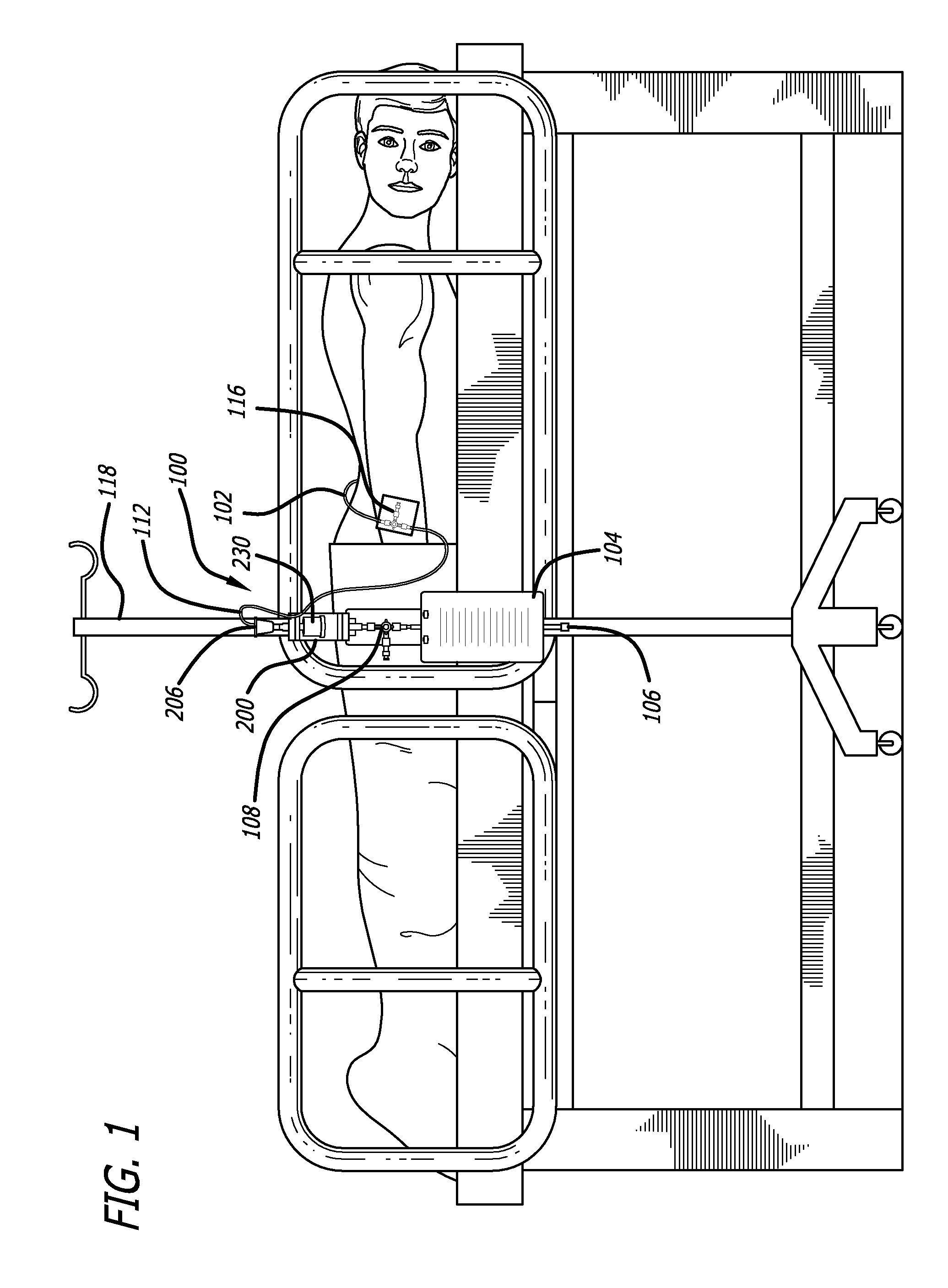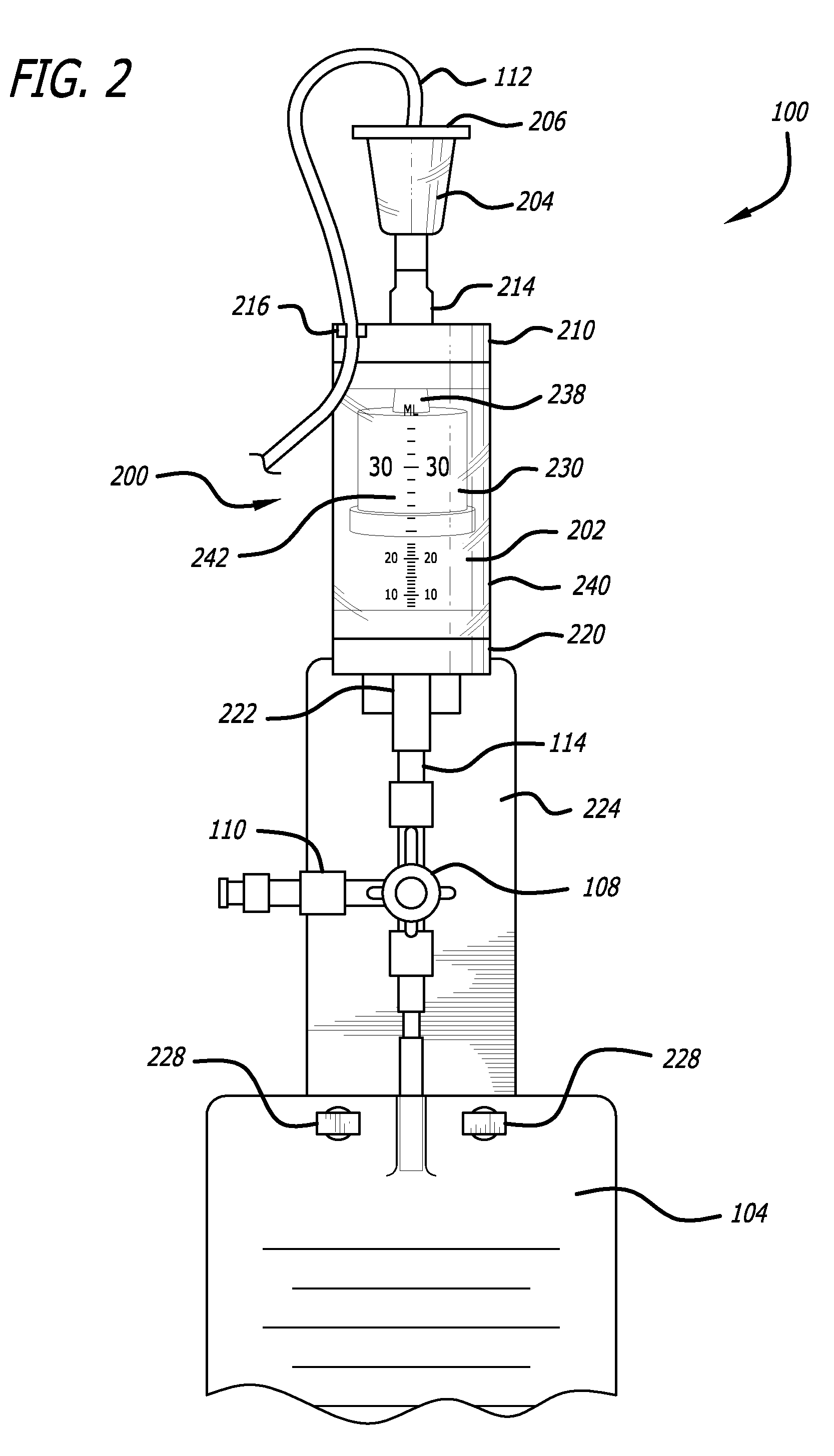Volume limiting bodily fluid drainage system
- Summary
- Abstract
- Description
- Claims
- Application Information
AI Technical Summary
Benefits of technology
Problems solved by technology
Method used
Image
Examples
Embodiment Construction
[0046]Referring now in more detail to the exemplary drawings for purposes of illustrating embodiments of the invention, wherein like reference numerals designate corresponding or like elements among the several views, an embodiment of a body fluid drainage system for volume limited drainage of a body fluid, such as cerebrospinal fluid (CSF), is illustrated in FIGS. 1-8 in accordance with aspects of the present invention.
[0047]Referring first to FIG. 1, one embodiment of the fluid drainage system 100 of the present invention is adapted to drain cerebro-spinal fluid (CSF) from the lumbar subarachnoid space of a patient. The drainage system includes a catheter 102 adapted to be inserted into the lumbar subarachnoid space through the low back of a patient to be treated. In another embodiment, the catheter may be inserted into the lateral ventricles of the patient to be treated to drain CSF from the brain. In yet another embodiment, bodily fluids from other anatomical locations or body c...
PUM
| Property | Measurement | Unit |
|---|---|---|
| Length | aaaaa | aaaaa |
| Force | aaaaa | aaaaa |
| Pressure | aaaaa | aaaaa |
Abstract
Description
Claims
Application Information
 Login to View More
Login to View More - R&D
- Intellectual Property
- Life Sciences
- Materials
- Tech Scout
- Unparalleled Data Quality
- Higher Quality Content
- 60% Fewer Hallucinations
Browse by: Latest US Patents, China's latest patents, Technical Efficacy Thesaurus, Application Domain, Technology Topic, Popular Technical Reports.
© 2025 PatSnap. All rights reserved.Legal|Privacy policy|Modern Slavery Act Transparency Statement|Sitemap|About US| Contact US: help@patsnap.com



